Austro-Hungarian Torpedo Boats: The torpedo invention:
Austro-Hungary almost invented the torpedo: An unknown Austro-Hungarian Officer designed in the middle of the XIXth century a small boat carrying a large charge of explosives. It was remotely steered by cable and propelled by a powerful steam or an air engine in order to reach its target as fast as possible before being spotted and hit. Croatian officer Giovanni Biagio Luppis Ritter von Rammer obtained his papers and began perfecting his ideas. He devised a new floating device controlled from land, and exploding on impact. Unfortunately his one metre long, glass wings prototype steered by ropes failed miserably. His second device had a clock mechanism propeller and an explosive at the stern triggered by a pistol-like control plus cables for steering. This “Salvacoste” worked and was shown to the Emperor. However the naval commission rejected it as not precise and fast enough for operations. In 1860 Lupis retired from the navy and in 1864 he was introduced to British Engineer Robert Whitehead. The latter managed at that time the ‘Stabilimento Tecnico Fiumano’ and took the idea further. He redesigned the device, renamed Minenschiff, demonstrated on 21 December 1866 with success to the naval commission which accepted it. This 355 mm, 3.35m long torpedo was the first operational ever.
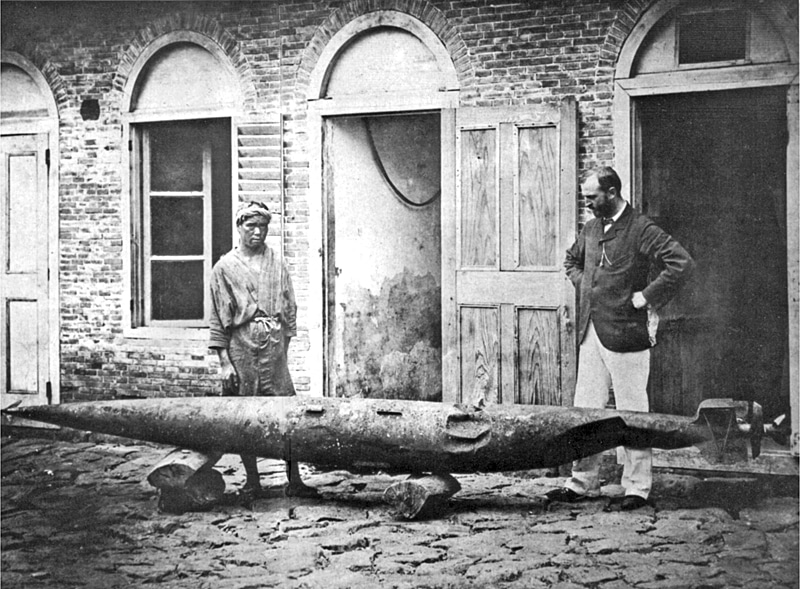
Robert Whitehead inspecting damage after first trials of the 1875 torpedo.
So it should seems legitimate that the Austro-Hungarian Navy would be the first to operate ships tailored to use it. But at that stage, propulsion for small crafts was in its infancy, and torpedoes were carried by large ships, cruisers and capital ships, or more often than not, operated from land. Whitehead in the 1870s created a new company and renegotiated the copyrights to control the sells of torpedoes, an instant success with all Navies of the age. The first torpedo station was American, the Naval Torpedo Station in Newport, Rhode Island. The first “kill” by torpedo occurred in the Russo-Turkish War of 1877–78. This was compounded later by naval actions such as the 1891 Chilean Civil War, the 1894 Revolta da Armada and 1895 Sino-Japanese War. The first modern torpedo boats appeared in UK, a mixing of this new weapon and the turbine-driven 1897 Parson’s Turbinia. They eclipsed previous spare-torpedo vessels and VTE-propelled boats and announced the coming of age of the destroyer.
Development of Austro-Hungarian Torpedo Boats, 1875-1914
As underlined above, Torpedo Boats development practically started in Austria-Hungary, the first listed boat being commissioned as far back as 1875. What were called the I and II, prototypes. Immediately following were the III/IV all for testings, retired well before the war. The real first “serie” started in 1880, the III class and the IIa and IIb classes built either at Pola or Yarrow. They were followed by the 1884-89 I class (24 boats), IIc class (1886-88, 7 boats) and IId class (6, 1891) and the larger (120-200 tons) semi-experimental “animals” serie of 7 ships. The last one, Kaiman, was built in 1905 at Yarrow, London and was the real first ocean-going TB type ever delivered to any navy. She was followed by a serie of 24 ships until 1909, then the pre-war (1913) TB74T, wartime TB82F, TB98M, before reverting to a new coastal type, with the TBI and TBVII series.
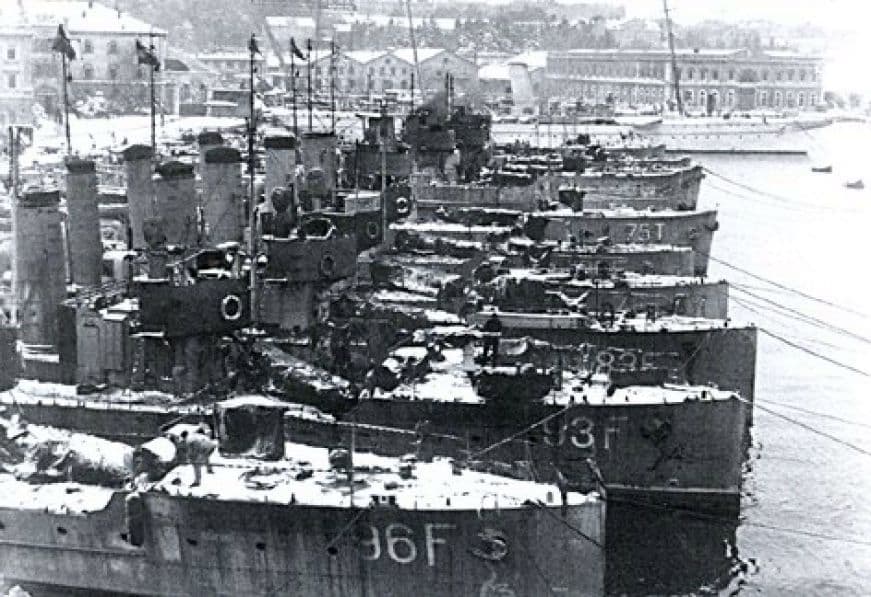
Ships of the Tb 82 and 74 F Austro-Hungarian Torpedo Boats classes
Early series: I-IV (1875-79)
These were not however the very first torpedo boats operational in any navy. The Royal Navy indeed launched the experimental HMS Vesuvius in 1873. However the first “modern TB” was perhaps the HMS lighting in 1876, designed by John Thornycroft, which had a powerful Two-cylinder compound steam engine, giving 460 hp (340 kW)for 18.5 kn (34.3 km/h). The Austro-Hungarian boats were just in-between:
-The I (launched 19/06/1875) was built by the same designer. A 7.5 tons (10 fully loaded), 20.7 x2.61 x1.23 vessel rated for 185 hp (18 knots). She was not seagoing by any means and was even unarmed. She ended her career as a patrol boat in 1893 on the Danube.
-The II (launched 21/05/1878) was a larger 28.4 tons, 26.5 x 3.5 x 1.55m boat rated for 300 hp and capable of 18.2 knots, armed with two TTs on the bow and served by a crew of 10. She was sold in 1905.
-The III and IV were sister Yarrow prototypes, launched in September 1879. She was a 27 tons, 26.4 x 3.3 x 1.5m boat propelled by a 430 HP engine which gave 17.5 knots and carrying 2 TT on the bow. Also both sold in 1905.
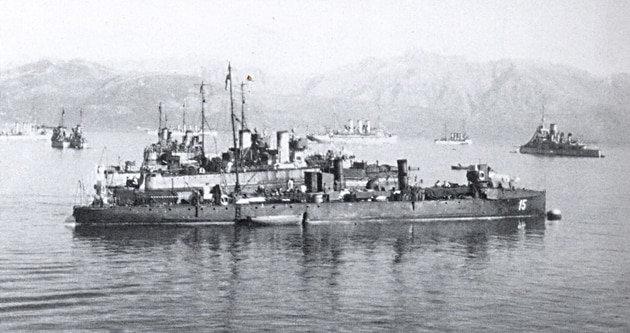
SMS 15 Boa, Austro-Hungarian Torpedo Boat
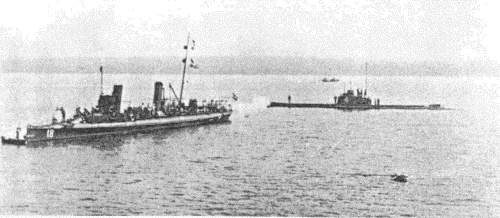
SMS Natter coastal torpedo boat (cdts navypedia)
III class (1880)
These six coastal TBs were built in two groups: The first group of four were all built locally, at Pola NYd. They were launched between Dec. 1880 and Feb. 1881, 27.7 tons, 27.7 x 3.3 x 1.35m with the same engine power but better speed at 18.3 knots, carrying also two bow TTs and served by a 10-strong crew.
The second serie comprised two “leader” boats (IX-X) built at Yarrow on a much larger design, 37 tons light, 42 fully loaded. They were 31.2 x 3.69 x 1.60 m long, carrying also two bow TTs but in addition one 37 mm QF gun either Nordenflet or Hotchkiss. She was serbed by a crew of 20 and with a 500 hp engine, was capable of 18 knots.
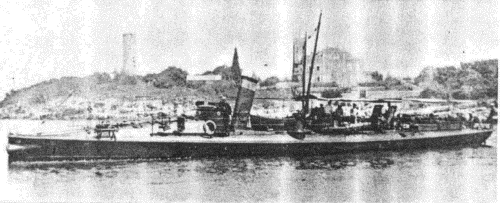
SMS XXXIV 1889 (cdts navypedia)
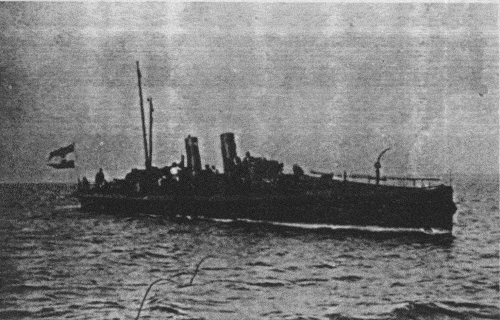
SMS XXXIII 1887 Austro-Hungarian Torpedo Boat (cdts navypedia)
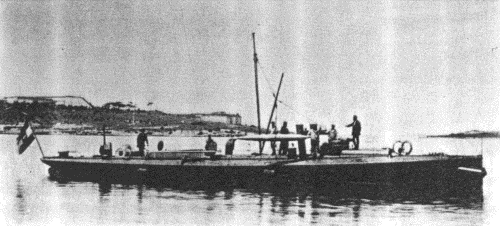
V class Torpedo Boats (cdts navypedia)
IIB class (1883-86)
The first large homogeneous serie of 16 Torpedo Boats, all built at Pola NYd, launched between 30/08/1883 and 07/01/1886. These were still coastal at 47 tons light, 55 fully loaded, propelled by a 600 hp engine (VTE ?) capable of 18 to 19 knots and carrying the same armament as described above on the Yarrow boats that served like prototypes. All were sold between 1904 and 1909, three reconverted in targets or transports.
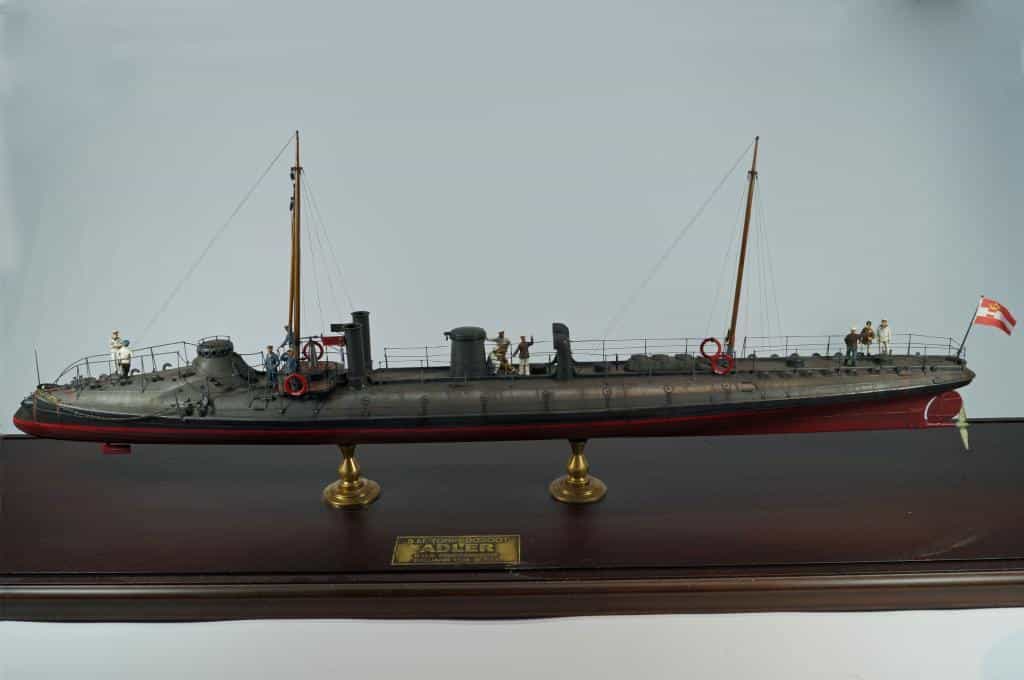
SMS Adler, model kit, by Thomas Simpson: http://imodeler.com/2016/06/sms-adler-austro-hungarian-torpedoboot-1886-172-scale/
I class or “Adler class” (1884-89)
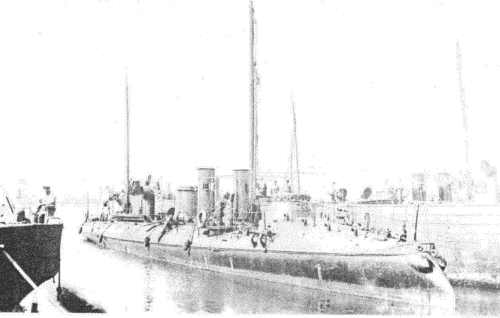
These 24 Austro-Hungarian Torpedo Boats were from three different groups.
-The Adler (Adler, Falke) were built at Yarrow, launched in Dec. 1884. They were much larger than previous ships at 95 tons light, 100 FL, 41.2 x 4.2 x 1.7 m in size, carrying as always two bow TTs but this time also two 37 mm QF guns. They were served by a crew of 22 and were given a large powerplant able to deliver a whooping 1300 hp, for 22 knots of top speed. Probably the best of their class at that time in the whole Mediterranean.

Sperber, 1/730 scale
-The Sperber, 1st class TBs, were slightly smaller, and for the first time experimentally ordered at Schichau, Elbing in Germany to keep pace with the state of technological advances there. The Sperber were 78 tons/93 tons FL 39.9 x 4.8 x 1.9m boats, propelled by 970 hp to 18.5 knots and armed the same way as above.

Rabe, 1/730 scale
-The Kuruk class was an homogeneous 1st class Torpedo Boats type ordered in three yards on Admiralty specifications and therefore identical at least on paper. These were twenty boats from Schichau (5), Pola (9) and Stabilimento Tecnico Trieste, John Thornycroft’s own company (6). They were launched between 1887 and 1889, all 78/88 tons FL, same specs as the previous Sperber, but with 1000 hp for 19 knots. Also armament configuration was different, with a fixed bow and an orientable deck TTs, and still two 37 mm QF guns. The crew was unchanged, still 16 officers and sailors.
Their fate varied a lot. The two Sperber had their boilers removed in 1905 and replaced by Yarrow modern oil burner ones. They served in WW1 and ended as war reparations to Italy. For the Kuruk serie, they all also participated in WW1 being given after the war either to italy or Yougoslavia. SMS Rabe received in 1896 brand new watertube boilers which altered her silhouette to two funnels (all others had one).
IIC class (1883-86)
-The first group (XXVII-XXXII) was built at Pola NYd between June 1886 and January 1888. These were smaller ships back to 47/55 tons, with a 600 hp engine capabe of 18 knots and the same armament as above.
-A single ship was ordered at Pola and launched in November 1887, 36.4 x 4.5 x 1.9m in size and 66/70 tons. Powered by 700 hp it could only reach 17 knots. Armament two 37 mm instead of one. Fate: Scrapped or sold before 1909. XXX resold to Danubius and reconverted, XXXII sunk as target in 1910.
IID class (1889-91)
-One ship was built at Scichau, Elbing (XXXIV), launched in March 1889, the others five were all from Pola, all launched in January 1891 on the same specs: 64 tons, 36.9 x 4.8 x 1.9 m, 750 hp, 20.3 knots, 2 TTs (bow and deck) and two 37 mm QF guns. Fate: all sold 1912 to 1915 (XXXV).
Late sea-going Torpedo Boats (1896)
These were the first true sea-going types, all between 130 and 200 tons, with top speed above 24 knots.
-Schichau first delivered the Natter (launched Feb. 1896), 166 tons, 47.3 x 5.3 x 2.8 m, 2200 hp for 24 knots. The SMS Natter had a crew of 21 and was armed with two 47 mm QF guns and three TTs centerline on deck. Deactivated 1910, war reparations to Britain resold and crapped in Italy 1920.
-SMS Viper was ordered in Yarrow, launched in January 1896. 124 tons, 44.96 x 4.5 x 2.3 m, 1900 hp for 25 knots, crew 25, same armament as above. War reparation to France in 1920 and scrapped.
-Python group: 4 ships built at Yarrow, 132 tons, 46.5 x 4.7 x 2.3 m, 2000 hp and 24.5 knots, crew 21, same armament as above. War reparations to France and Britain in 1920. From 1910 all extant boats were renamed with numbers.
Large sea-going TBs: Kaiman class (1905)

1/400 illustration of the Kaiman class by the author
First built at Yarrow, she was the lead ship of a new “major serie” of sea-going TBs. She was 203 tons, 56x 5.4x 1.5 m, 3000 hp for 26.2 knots and armed this time with four 47 mm guns in addition to her three deck TTs. The Kaiman was a lead ship in 1905 of a brand new serie, she was named herself later TB50E (E for England). The following (Anaconda) was built at Trieste (STT) and therefore called Tb51T from November 1913. In all 23 ships were delivered, launched by STT and Danubius Fiume Yd under British assistance, plans and engineering.
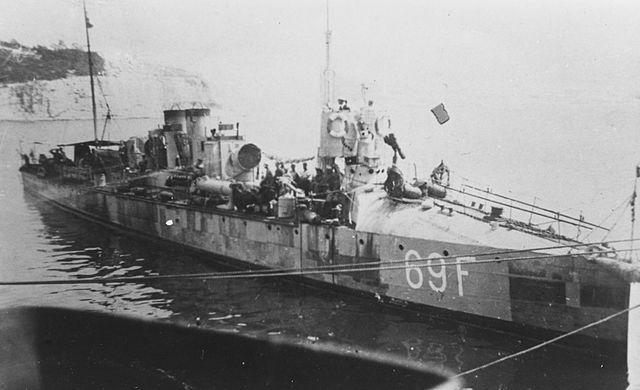
69F of the Kaiman class (ex. SMS Polyp)
The four 47 mm guns were were 33 calibers. The three 450 mm (17.7 in) TTs were on the deck, one single at the rear, one port and starboard just after the raised bow turtleback and direction post. They had two funnels, close together. In 1915 they received a 8mm machine gun for AA defence. These successful ships were very active in ww1, survived the war despite collision and minings, and ended as war reparations to Britain and Yugoslavia. British boats were resold and scrapped in Italy.
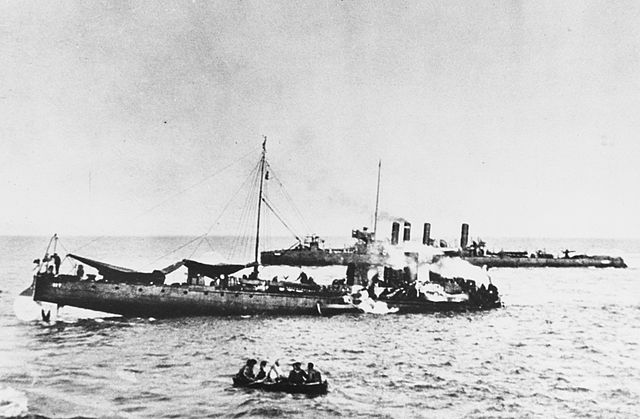
Tb 51 T (ex-Alligator) after being torpedoed by French submarine Papin. She was towed, repaired and back in service.
Tb-I coastal class (1909)
A class of six coastal TBs one of the three designs for a 110 tons model proposed by the Austrian Naval Technical Committee i 1905. These differed by their VTE engine or turbines arrangements. An oil-firing VTE model was preferred and chosen for blueprints in 1907, and compared to Krupp, Yarrow and Schichau designs. Danubius NYd being not able to deliver his share, only six were ordered at STT and Fiume. All six were launched in 1909. One of the good surprise of their design was their seaworthiness by gale force winds. Their armament comprised two TTs, centerline, and two 47 mm/44 calibers, one at the rear before the aft Torpedo tube and the other on a raised platform on the prow turtleback.
Two funnels, 1 shaft, 3 cylinders VTE coupled to two watertube Yarrow boilers, producing 2500 hp to reach 28 knots.
166 tons, 44.2 x 4.3 x 1.2 m in size, crew 20. They all srerved well in WW1, for escort duties, patrols and ASW warfare, even minesweeping. All but one were given to Italy and scrapped. Tb3 was used briefly until 1925 as an Italian customs boat.
Tb-VII coastal class (1910)

Tb XI, of the Tb VII class, 1/200 illustration by the author
Six ships built at Danubius, Fiume, on the same specs as before. Launched between January and May 1910, only differing from the previous class by their searchlight platform location (after the forward turret), although internally, had different boiler systems, main and auxiliary machinery and lower top speed (100 hp less) due to White-Forster boilers. Guns were also a more modern mode, 47 mm of 47 calibers rather than 44. These were Hungarian-built for the sake of politics. They also had a heavy angle of heel at high speed when turning. All six survived the war only to be given to Italy, and scrapped, but Tb7 which served briefly as a customs boat. Tb 11 was the only ship suffering a mutiny, in 1917. Her crew crossed the Adriatic and surrendered to the Italians, commissioned as Francisco Raimondo and scrapped in 1925.
Tb-74 T class (1913)
These were eight sea-going TBs, larger than the Kaiman. They proceeded from a 1910 requirement for a 275 tons TB design capable of sustaining 30 knots for 10 hours, what needed to cross the Otranto canal for attacking at down and then returning full speed to Cattaro. At that stage indeed, the blockage of the Otranto strait by the Italians was a realistic scenario. After eliminating powerplants like diesel and turbo-electric the choice fell on the turbine design proposed by STT, which secured the order. The eight ships were launched between August 1913 and August 1914. These Austro-Hungarian Torpedo Boats therefore brand new when the war erupted. As being the first small ships fitted with turbines they encountered a stray teething problems for all their career, until the crews were used to manage these. For the sake of standardization their armament stayed the same as for the Kaiman class.

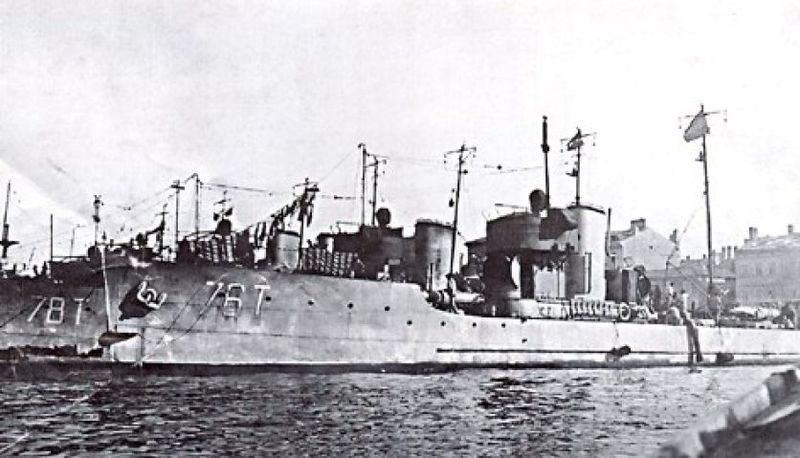
Tb-81T and Tb-76T
All these Torpedo Boats were very active during the war, and all survived, after making patrols, ASW missions, escort duties, minesweeping. Four were allocated to Romania (one saw service in ww2 and was still active by 1958), the other four were Yugoslavian and after 1941, Italian, Croatian after 1943, even German, TA48 lasting until 1945.
-Displacement: 262/267.3 tonnes -Dimensions: FL, 57.8 x 5.08 x 1.5m (190 x 18 x 5ft)
-Powerplant: 2 shafts, Parsons turbines, 2 Yarrow WT oil-fired boilers, 5000 hp, 28 knots.
-Armament: 2x 66 mm/30, 2x 450mm TTs centerline. In 1914, 1x 8mm MG added. 1917: 66mm on AA mounts.
Tb-82 F class (1914)

1/400 Profile of the Tb 82F by the author
Although derived from the 1910 specs, these sixteen 244 tons ships were built at Danubius Yds facilities at Porto Re and Bergudi (now Kraljevika and Brgud). They had another set of turbines (less troublesome) and two funnels instead of one. To gain the order, the yard has to lower the tag price of 10%. They were launched from August 1914 to July 1916 and were commissioned between July 1915 and December 1916. Apart diverging specs from the two previous sea-going groups they were similarly armed, and can reach 28 knots thanks to ther Danubius turbines coupled with Yarrow boiler (watertube, oil-fired) that delivered 5000 hp. The major improvement was the adoption of double torpedo tube banks, so that any ship can fire a broadside of four engines at once, a dark prospect for any battleship.
All served actively and survived the war. They were afterwards given as war reparations to Romania (three), six were sold to Portugal, three to Greece, three to Yugoslavia and after 1941, Italy and Croatia. They all served in WW2 (fate seen in the future articles about these navies).
-Displacement: 244/267 tonnes -Dimensions: FL, 58.8 x 5.8 x 1.5m (192 x 19 x 5ft)
-Powerplant: 2 shafts, AEG-Curtis turbines, 2 Yarrow WT oil-fired boilers, 5000 hp, 28 knots.
-Armament: 2x 66 mm/30, 4x 450mm TTs centerline (2×2). In 1914, 1x 8mm MG added. 1917: 66mm on AA mounts.
Tb-98 M class (1914)

Profile of the Tb98T by the author
The last Austro-Hungarian torpedo-boats were also derived from the same 1910 design concept. They were the only one actually reaching the top speed projected, 29.5 knots regular (30 forced). All were built at Cantiere Navale Triestino, Montfalcone. They were the longest of the lot and the narrowest, which perhaps explained their speed, at the price of agility. Only three ships were built, Tb98M, 99M and 100M. They shared the same armament as the previous class, including the two twin TT banks, but received a 8mm Schwartzlose AA machine-gun or assimilated. This time, they tried Melms-Pfenninged turbines, but still relied on Yarrow boilers. All three were very active in WW1 and were sold to Greece in 1920. Under their new names, Kyzikos, Kidonai and Kios, they were scuttled at Salamis Yard in 1941 to prevent captured by the Germans, Kidonai being blown up by a German plane (most probably Stuka) the day after.
-Displacement: 250/265 tonnes FL -Dimensions: 60.4 x 5.6 x 1.5m (192 x 19 x 5ft)
-Powerplant: 2 shafts, Melms-Pfenninged turbines, 2 Yarrow WT oil-fired boilers, 5000 hp, 29.5 knots.
-Armament: 2x 66 mm/30, 4x 450mm TTs centerline (2×2), 1x 8mm MG.
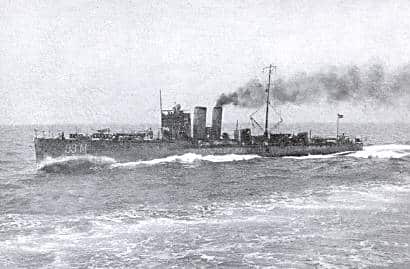
Late Tb 98 M class Austro-Hungarian Torpedo Boat at sea
Sources, links
http://www.mateinfo.hu/Torpedoboats.pdf
www.navypedia.org/ships/austrohungary/ah_dd.htm
en.wikipedia.org/wiki/Torpedo_boat
en.wikipedia.org/wiki/SMS_Boa
en.wikipedia.org/wiki/Kaiman-class_torpedo_boat
naval-history.net/PhotozHinds-GerS33.JPG-S33 by Joseph Hinds
Conway’s all the world’s fighting ships 1860-1906 and 1906-1921



 Latest Facebook Entry -
Latest Facebook Entry -  X(Tweeter) Naval Encyclopedia's deck archive
X(Tweeter) Naval Encyclopedia's deck archive Instagram (@navalencyc)
Instagram (@navalencyc)





 French Navy
French Navy Royal Navy
Royal Navy Russian Navy
Russian Navy Armada Espanola
Armada Espanola Austrian Navy
Austrian Navy K.u.K. Kriegsmarine
K.u.K. Kriegsmarine Dansk Marine
Dansk Marine Nautiko Hellenon
Nautiko Hellenon Koninklije Marine 1870
Koninklije Marine 1870 Marinha do Brasil
Marinha do Brasil Osmanlı Donanması
Osmanlı Donanması Marina Do Peru
Marina Do Peru Marinha do Portugal
Marinha do Portugal Regia Marina 1870
Regia Marina 1870 Nihhon Kaigun 1870
Nihhon Kaigun 1870 Preußische Marine 1870
Preußische Marine 1870 Russkiy Flot 1870
Russkiy Flot 1870 Svenska marinen
Svenska marinen Søværnet
Søværnet Union Navy
Union Navy Confederate Navy
Confederate Navy Armada de Argentina
Armada de Argentina Imperial Chinese Navy
Imperial Chinese Navy Marinha do Portugal
Marinha do Portugal Mexico
Mexico Kaiserliche Marine
Kaiserliche Marine 1898 US Navy
1898 US Navy Sovietskiy Flot
Sovietskiy Flot Royal Canadian Navy
Royal Canadian Navy Royal Australian Navy
Royal Australian Navy RNZN Fleet
RNZN Fleet Chinese Navy 1937
Chinese Navy 1937 Kriegsmarine
Kriegsmarine Chilean Navy
Chilean Navy Danish Navy
Danish Navy Finnish Navy
Finnish Navy Hellenic Navy
Hellenic Navy Polish Navy
Polish Navy Romanian Navy
Romanian Navy Turkish Navy
Turkish Navy Royal Yugoslav Navy
Royal Yugoslav Navy Royal Thai Navy
Royal Thai Navy Minor Navies
Minor Navies Albania
Albania Austria
Austria Belgium
Belgium Columbia
Columbia Costa Rica
Costa Rica Cuba
Cuba Czechoslovakia
Czechoslovakia Dominican Republic
Dominican Republic Haiti
Haiti Hungary
Hungary Honduras
Honduras Estonia
Estonia Iceland
Iceland Eire
Eire Equador
Equador Iran
Iran Iraq
Iraq Latvia
Latvia Liberia
Liberia Lithuania
Lithuania Mandchukuo
Mandchukuo Morocco
Morocco Nicaragua
Nicaragua Persia
Persia San Salvador
San Salvador Sarawak
Sarawak Uruguay
Uruguay Venezuela
Venezuela Zanzibar
Zanzibar Warsaw Pact Navies
Warsaw Pact Navies Bulgaria
Bulgaria Hungary
Hungary

 Bundesmarine
Bundesmarine Dutch Navy
Dutch Navy Hellenic Navy
Hellenic Navy Marina Militare
Marina Militare Yugoslav Navy
Yugoslav Navy Chinese Navy
Chinese Navy Indian Navy
Indian Navy Indonesian Navy
Indonesian Navy JMSDF
JMSDF North Korean Navy
North Korean Navy Pakistani Navy
Pakistani Navy Philippines Navy
Philippines Navy ROKN
ROKN Rep. of Singapore Navy
Rep. of Singapore Navy Taiwanese Navy
Taiwanese Navy IDF Navy
IDF Navy Saudi Navy
Saudi Navy Royal New Zealand Navy
Royal New Zealand Navy Egyptian Navy
Egyptian Navy South African Navy
South African Navy






























 Ukrainian Navy
Ukrainian Navy dbodesign
dbodesign